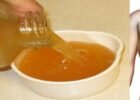Estrogen is the predominant sex hormone found in women that control the menstrual cycle, the growth of breast, pubic and underarm hair. In addition to this, estrogen also controls cholesterol levels, protects bone health and even affects the brain.
In other words, estrogen is a vital part of a healthy, functioning body for women.
However, few women know that there is such a thing as too much estrogen, also known as estrogen dominance. While it isn’t frequently discussed as a major health concern among women, estrogen dominance is actually very common in women, especially around North America, with estrogen dominance affecting 50% of women over 35 in the US.
While most women are learning to read the signs and symptoms of this condition, many are left to wonder what to actually do if they suspect they are suffering from this. The simple protocol below will help you bring your hormones back into balance, and can also be used by both men and women to prevent it in the first place.
Before we go to that, here are the top 10 symptoms of estrogen dominance:
1. Abnormal menstrual periods
2. Bad PMS (breast tenderness/swelling, mood swings, headaches)
3. Low libido
4. Weight gain (especially hips and abs)
5. Fatigue
6. Difficulty sleeping
7. Brain fog
8. Thyroid dysfunction
9. Hair loss
10. Slow metabolism
Step 1: Remove xenoestrogens
Sadly, as a side-effect of greater industrialization and new discoveries in technology, we’ve seen harmful chemical compounds enter into our day-to-day routine. One such chemical compound is called a xenoestrogen, which can mimic estrogen in the body.
Some of the top offenders to swap out of your daily routine include plastic bottles, BPA cans, plastic Tupperware, tap water, birth control pill, dryer sheets, soy protein isolate, non-organic dairy, cosmetics, makeup, and toiletries.
Step 2: Ensure efficient elimination
Removing excess estrogen from your body is essential, but if you are chronically constipated that estrogen won’t go anywhere. It’s simply going to re-enter the bloodstream and circulate throughout the body, continuing to cause problems.
So, before beginning to take liver and estrogen detoxification supporting supplements make sure you are having daily bowel movements. If you’re not, try out these tips:
- Drink 2-3L of water daily.
- Fill up half your plate with vegetables at each meal.
- Eat probiotic foods like kimchi, sauerkraut, miso, kefir, plain yogurt and tempeh.
- Add a scoop of fiber to your daily smoothie, oatmeal or parfait.
- Supplement with magnesium citrate or Triphala (an Ayurvedic herb that promotes bowel movements).
Step 3: Support liver health & Estrogen detoxification
A well-functioning liver helps us remove excess estrogen from the body. During the detoxification process (phase 1 and phase 2), the liver turns the estrogen into a water-soluble form so that it can be excreted through urine and stool.
Here’s what you can do to support liver function?
- Each a real, whole-foods based diet and avoid processed foods.
- Drink plenty of clean, filtered water (2-3L daily).
- Avoid overeating
- Avoid alcohol abuse
- Eat plenty of foods that support liver health such as beets, dandelion greens, dark leafy greens, artichoke, onions, garlic, leeks, shallots, cruciferous vegetables (broccoli, cabbage, brussels sprouts, kale etc.)
- Supplement with herbs that support liver health such as Milk thistle, dandelion root, barberry, gentian, rosemary, licorice, ginger, red clover, burdock root.
- Supplement with nutrients that support detoxification such as B-vitamins (in particular, B6, B12 and folic acid).




